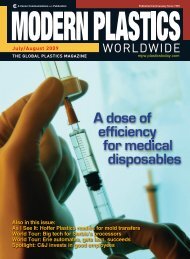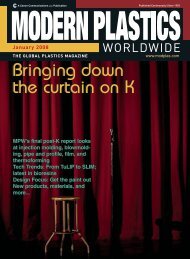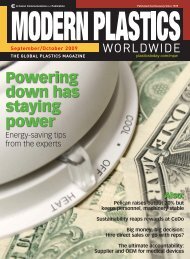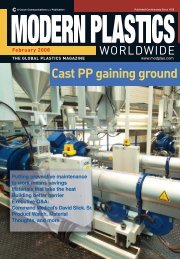amidiq - dae uptlax
amidiq - dae uptlax
amidiq - dae uptlax
You also want an ePaper? Increase the reach of your titles
YUMPU automatically turns print PDFs into web optimized ePapers that Google loves.
N. Martínez-Vázquez et al. / Revista Mexicana de Ingeniería Química Vol. 6, No. 3 (2007) 337-345<br />
(a) (b) (c)<br />
Fig. 6. SEM pictures of methylcellulose & poly (acrylamide) hydrogels with a rate of 80/20. (a) 0.5% initiator and<br />
1.0% crosslinker (b) the same, but with swelling at 30ºC and pH=7, and (c) the same, but with an increase of<br />
initiator from 0.5 to 1.0%.<br />
(a) (b) (c)<br />
Fig. 7. SEM pictures of methylcellulose & poly (acrylamide) hydrogels with a rate of 80/20. (a) 1.0% initiator and<br />
1.0% crosslinker, (b) the same, but with swelling at 30ºC and pH=7, and (c) the same, but with a decrease in<br />
initiator from 1.0 to 0.5%.<br />
(a) (b) (c)<br />
Fig. 8. SEM pictures of methylcellulose & poly (acrylamide) hydrogels with a rate of 80/20, pH=7, and 1.0%<br />
initiator and 1.0% crosslinker at (a) 20ºC, (b) 30ºC, and (c) 40ºC.<br />
These results are very similar to those<br />
presented by Chen and Park (2000) where they<br />
indicate that a material’s porous structure remains<br />
intact after drying in ethanol, contrary to when it is<br />
dried without adding the ethanol.<br />
In Fig. 8, the same material is observed with<br />
equal ratios and concentrations of initiator and crosslinker,<br />
varying the swelling evaluation since it is at<br />
different temperatures: (a) 20º, (b) 30º, and (c) 40ºC.<br />
Here, it is observed that the structure in Fig. 8a did<br />
not show a change in its surface after swelling, while<br />
Fig. 8b presented a porous structure after swelling<br />
and its surface changed significantly upon increasing<br />
it by 10º, in addition to obtaining the maximum<br />
swelling degree at this temperature. On the other<br />
hand, Fig. 8c showed a very similar surface to that of<br />
7b, with the difference being that at this temperature,<br />
a crack of approximately 600 µm with an opening of<br />
10 µm was shown due to an increase in temperature<br />
causing a decrease in the swelling degree. For this<br />
reason, the conclusion was drawn that the adequate<br />
temperature for this material presenting a porous<br />
structure is 30ºC due to the presence of available<br />
pore volume (less crosslink junctions), which in turn<br />
accommodates larger amounts of water molecules<br />
within the hydrogel networks.<br />
343









